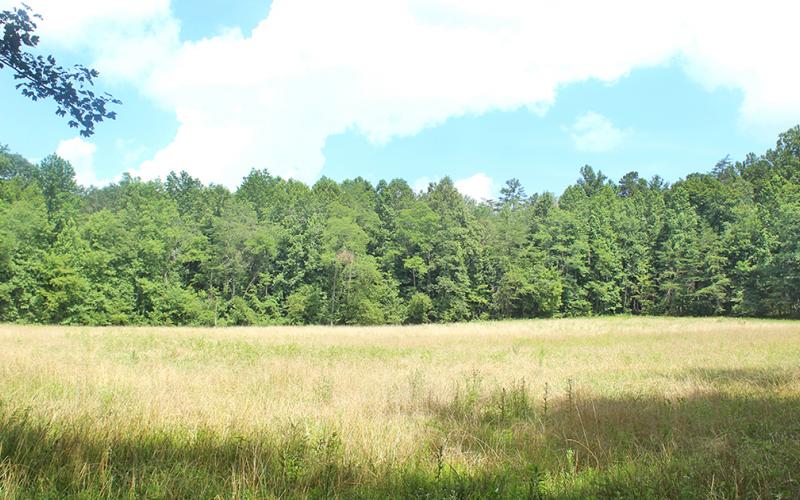Almost a year after participants of the Rainbow Family Gathering descended into the Chattahoochee National Forest for their 47th annual national gathering, the area utilized by the nearly 3,500 visitors appears to be back to normal with no signs of adverse, long-term environmental impact, said officials.
“As a result of timely rehabilitation efforts by a few gathering participants, members of the public, the U.S. Forest Service and our partners, we are not aware of any remaining significant negative environmental effects,” said U.S. Forest Service Public Affairs Officer Steven Bekkerus who added that approximately $100,000 worth of repairs have been made since the festival ended last summer.
It was last June when the announcement of the coming Rainbow event rattled some locals and local officials who were concerned that the thousands of attendees would do significant damage to the wooded lands of Jake and Bull Mountains.
Last week, The Nugget took a close look at that land by traveling the same roads as the festival-goers.
And like Bekkerus reported, the impact appeared to be minimal.
“Immediately after the gathering, there was some re-opening of slit trenches by wildlife, but these were short term impacts over the summer of 2018 that have been mitigated by time,” Bekkerus said.
Local John Segars, who frequents the area the gathering took place, concurred with Bekkerus’ account of what he has seen in the area since last summer’s event.
“For a couple weeks after the gathering, there was a smell that probably was from the slit latrines being dug up by wildlife,” said Segars. “But, the smell went away after a few weeks and the area seems to be back to normal.”
Segars also mentioned that bear sightings went up in the area shortly after the gathering as well.
“I normally have one bear sighting each year when I come out here,” Segars said. “But, this past year I actually had three bear sightings in the area.”
As for the vegetation that was disturbed during the gathering, Bekkerus told The Nugget that most of the areas used during the event have recovered nicely.
“A majority, but not all, disturbed areas have fully re-vegetated,” Bekkerus said. “Other areas are partially re-vegetated and will recover with more time and lack of disturbance.”
KEEPING IT CLEAN
For almost a month after the gathering, the Rainbow Family Gathering clean-up and rehabilitation crews reportedly collected and disposed of over four tons of trash, leftover camping gear and recyclables during the clean up process. The crews also cleaned a few hundred pounds of litter and abandoned bike wheels, clothes and other junked items from the Jake Mountain parking area located off Nimblewheel Church Road, despite the fact that the area was off-limits to gatherers during the event.
After trash collection and disposal, the crews worked to aerate compacted areas, duff camp sites, bury compost and fill in the Marine sanitary slit latrines which were used during the gathering.
According to Bekkerus, the biggest impact of the gathering was on the forest roads in the area. Erosion of the forest roads in the area that were utilized for parking by both gathering attendees and law enforcement officers working in the area was repaired through the combined efforts of the U.S. Forest Service, the U.S. Army and Lumpkin County.
“The only reason that the gathering’s road and vehicle parking impacts have been mitigated post-gathering is due to direct investment in road and right of way repair during the summer and fall of 2018,” Bekkerus said. “A conservative cost estimate for these investments is $100,000.”
A $100K PRICE-TAG
U.S. Forest Service Staff Officer Judy Toppins supplied The Nugget with a breakdown of the cost of the repairs. According to the breakdown, the county paid $2,380 for side arm mowing in the area at a cost of $350 per mile, the U.S. Army contributed $22,020 for surface maintenance, drainage structure maintenance and crushed aggregate in the area and the U.S. Forest Service spent $69,400 in order to repair the roads and right of ways.
“The cost breakdown was provided as an estimate of the road repair/maintenance work necessitated by the gathering above and beyond normal maintenance work such as re-shaping the road surface, cleaning drainage structures including ditches, culverts, waterbeds and turnouts and application of aggregate material/gravel astride Forest Service roads and ditches during the gathering,” said Toppins. “The overwhelming majority of these costs are gathering related.”
She added that some of the road work was in part due to the administrative traffic of Forest Service workers and law enforcement that were present during the gathering.
“Of the roads listed in the estimate, the only segment of FS road that was closed to public vehicular traffic throughout the gathering was the top half of FSR 77, and this segment of road was heavily impacted by administrative traffic made necessary by the gathering,” Toppins said.
Toppins went on to say that given the time that the work was done and given the terrain of the forest service roads that much of the work done in the area might not be apparent to casual observers.
“Given that it has been more than six months since the repair work occurred on these roads and at least six months of continued use since then, it is not surprising that one would not notice significant road condition differences since last year,” Toppins said. “Gravel roads deteriorate quickly in steep terrain, severe weather and heavy use.”

